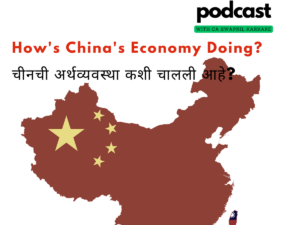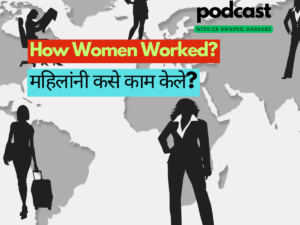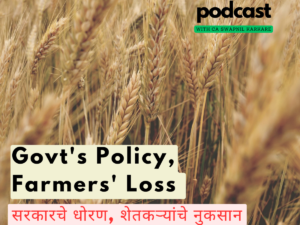The pandemic and further lockdowns posed a cruel dilemma for governments across the world – to save lives or livelihoods. It was unfortunate that more than six million people have died so far due to Covid. But the scientific and pharma communities have been exceptionally effective in delivering vaccines within just a year. It is phenomenal.
With regards to livelihoods, there has been a mixed bag of decisions. Different countries adopted different policies. Some worked, some didn’t. The labour markets all over the world have been oscillating and experiencing structural challenges – work from home, great resignation, demand for work-life balance, higher wage demand, labour shortages, increased bargaining power of workers, etc.
Two years after the pandemic, it seems that unemployment is no more an exceptionally different problem. It doesn’t mean that the governments have solved it. But, at least, statistically, they have brought it down to the pre-Covid levels. Remember, the 20%+ unemployment rates during the initial days of lockdown? Most large countries don’t have that anymore, thanks to less lethal variants and stronger antibodies in our bodies.
The data from the below chart show that unemployment rates in most countries (both advanced and emerging economies) are now below the pre-Covid levels. India and China have maintained the pre-Covid level while the situation has worsened in Malaysia and Peru.

[Unemployment rates in other countries: South Africa (Jan-Mar 2022) = 34.5%, Tunisia (Jan-Mar 2022) = 16.1%, Spain (Jan-Mar 2022) = 13.7%, Turkey (Apr 2022) = 11.3%]
Advanced countries are facing different challenges than emerging countries. They have labour shortage issues owing to the great resignation wave amidst the pandemic. To prevent further resignations, companies have shelled out more money in the form of bonuses and salary hikes. But higher pay does not seem to be the silver bullet for this issue. A few days ago, images from Heathrow Airport (London) of stacked luggage bags and long queues of travellers got viral highlighting the labour shortage at the airport.
These economies currently have tight labour markets. A tight labour market means that there are plenty of job opportunities. If a person is looking for a job, there is a high probability of him/her/zim getting hired. Those already working will have higher bargaining power and might get a higher package in wage negotiations. Read what central banks have to tell more on the same in the last section of the article.
Emerging market economies, however, have not seen resignations, wage hikes and labour shortages to that extent. These countries are ensnarled with a reduction in the labour force (as seen in the chart below) which can have a negative impact on the countries’ long-term prospects. High unemployment rates, lower labour force and increased inflation are a recipe for unrest. People in Turkey, Tunisia, Sri Lanka, Peru and Pakistan have already occupied the streets against the incumbent governments.

India’s Labour Market
India’s labour market situation is quite unique considering its population and the state of development. It has a very high unemployment rate and a very low labour force participation rate (LFPR). Covid has pushed 2-3% of people out of the labour force. This is alarming!

The present circumstances are so bad that the unemployment rate for well-educated is itself more than 15%. On one hand, there aren’t enough jobs for the graduates, while on the other hand, many graduates lack the basic skillsets and knowledge required for the jobs – a common complaint by the industry.

Among Indian states, Meghalya (60%) has the highest labour force participation rate followed by Telangana (53%), Tripura (52%) and Gujarat (47%). Uttarakhand (31%), on the other hand has the lowest labour force participation rate followed by Himachal Pradesh (33%), Uttar Pradesh (33%) and Tamil Nadu (34%). Barring Odisha, Assam and Rajasthan, participation rates in other states, have fallen below pre-Covid levels. This shows that people moving out of labour force is common trend in all the states.

Variation of data on unemployment rates between states is very high. Chhattisgarh, Madhya Pradesh, Odisha and Gujarat have very low unemployment rates, while the unemployment rate in Haryana, Rajasthan, Jharkhand and Bihar have crossed 15%. Out of 27 states presented below, unemployment rates in 15 states are below the pre-Covid levels.

Final Thoughts
Tighter labour markets will push the CTCs upwards. Increased salaries and wages would translate in more demand for goods and services which would mean increased inflation as there won’t be a corresponding increase of supply in the short run.
The nature of labour market and inflation in advanced economies is different than in emerging markets.
Indian economy, as discussed earlier, is at a crucial point. Due to abundance of unskilled or low-skilled labour in the country, India still needs to focus on labour-intensive jobs. But these industries have moved to Vietnam and Bangladesh because of low-wage environment.
Attracting investments that can provide more jobs is therefore the need of the hour.
“No country, however rich, can afford the waste of its human resources. Demoralization caused by vast unemployment is our greatest extravagance. Morally, it is the greatest menace to our social order.” – Franklin D. Roosevelt
Compilation of What Central Bankers Have Said About Labour Markets (Annexure)
Most central banks of advanced economies comment on the labour market situation as they have a clear mandate of maintaining the unemployment rate below a threshold limit. However, central banks of the emerging economies do not target the unemployment rate specifically. Also, getting the unemployment rate is also a huge task. Therefore, the central banks of these countries do not comment on the labour market situation often.
Here’s what central bankers have said in the latest available minutes of the monetary policy meetings –
Federal Reserve:
Minutes of the Meeting of May 3–4, 2022
The ability of firms to meet demand continued to be limited by labor shortages and supply chain bottlenecks.
Participants commented that demand for labor continued to outstrip available supply across many parts of the economy and that their business contacts continued to report difficulties in hiring and retaining workers. They observed that various indicators pointed to a very tight labor market.
Bank of England:
Minutes of the Meeting ending on June 15, 2022
Recruitment difficulties have remained elevated and labour demand has remained strong. Underlying nominal earnings growth has also remained strong, and the Bank’s Agents report that bonus payments have been used to address recruitment and retention difficulties. All of these indicators remain consistent with a tight labour market.
Contacts had said that they expected recruitment difficulties to persist for at least the next twelve months, due to structural shortages of labour and skills.
Reserve Bank of Australia:
Minutes of the Meeting ending on June 7, 2022
Turning to the labour market, members noted that labour market conditions were the tightest in decades.
Firms had become more willing to pass on cost increases to consumers and, in a tight labour market, employees were demanding higher wages as compensation for higher living costs. In such an environment, there is a heightened risk of persistently high inflation, especially if expectations of higher inflation become entrenched.
Members noted that an upswing in private and public investment was under way. However, shortages of materials and labour were an ongoing challenge for residential construction and infrastructure projects.
European Central Bank:
Minutes of the meeting ending on April 14, 2022
Across sectors, employment in market services, including tourism, had not yet returned to its pre-pandemic level, while the public sector had been a key driver of job creation, with public sector employment standing about 3% above the pre-pandemic level at the end of 2021.
The currently estimated parameters suggested only a very low pass-through from price changes to wages. As there was so far little evidence of structural changes taking place in the labour market, second-round effects through wages were unlikely at the current juncture.
Bank of Japan:
Minutes of Meeting ending on April 28, 2022
While the number of employees continued to rise, the degree of tightness in the labor market had been increasing further, with the labor force participation rate recovering at only a moderate pace and the job openings-to-applicants ratio and turnover rates remaining high.
…. suggested that the base pay rise for fiscal 2022 was somewhat larger than that in the past few years. However, one of these members said that it was highly likely that the wage increases would not fully cover inflation for fiscal 2022, and thus it was crucial that further wage increases be made in fiscal 2023 onward.
Banco de Mexico (Central Bank of Mexico):
Minutes of the meeting ending on May 12, 2022
Regarding the labor market, most members highlighted the progress observed in several indicators, although negative effects persist.
[One member] stated that the favorable performance of employment indicators has contributed to slightly reduce labor market slack, although total employment still remains significantly below its pre-pandemic trajectory.
Reserve Bank of India:
Minutes of the meeting ending on June 8, 2022
Ashima Goyal: There are a number of links in the chain from wages to prices. Wages rise with expected inflation and the tightness of the labour market. In India they are especially sensitive to food inflation. If the labour market is not tight there would not be much impact of wages on prices despite expected inflation. Rising employment does not put pressure on wages, if there are many willing to work without higher wages. We know unemployment is high in India, especially for youth. Many are looking to shift to more productive jobs. Wages are rising in sectors like information technology where there is a shortage of skills, but it is not yet a general phenomenon. Contrast this with the US where acute shortages are pushing up wages. During the pandemic many firms have economized on labour cost and the share of wages has gone down. Moreover, the aggregate supply curve is estimated to be flat so that prices do not rise much even if employment rises.
– Swapnil Karkare











